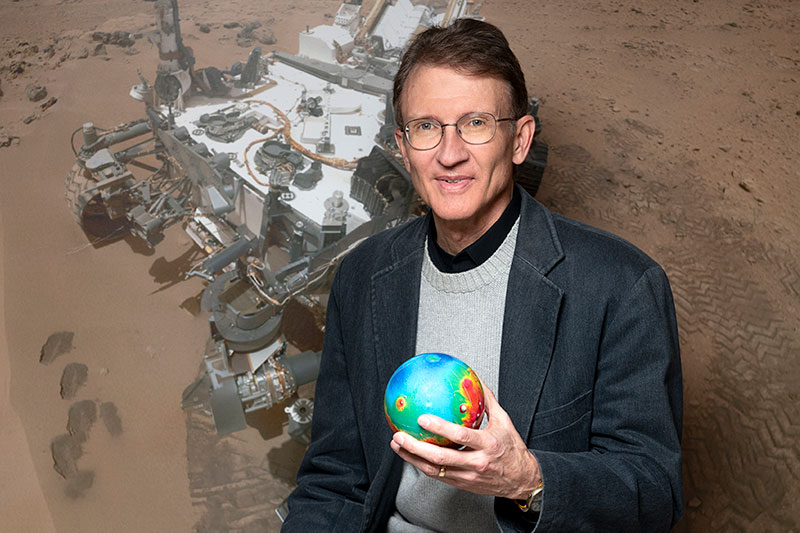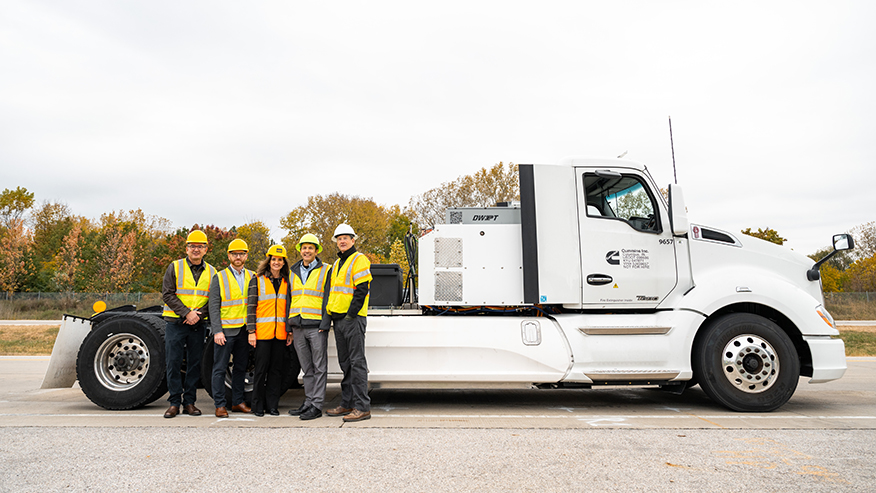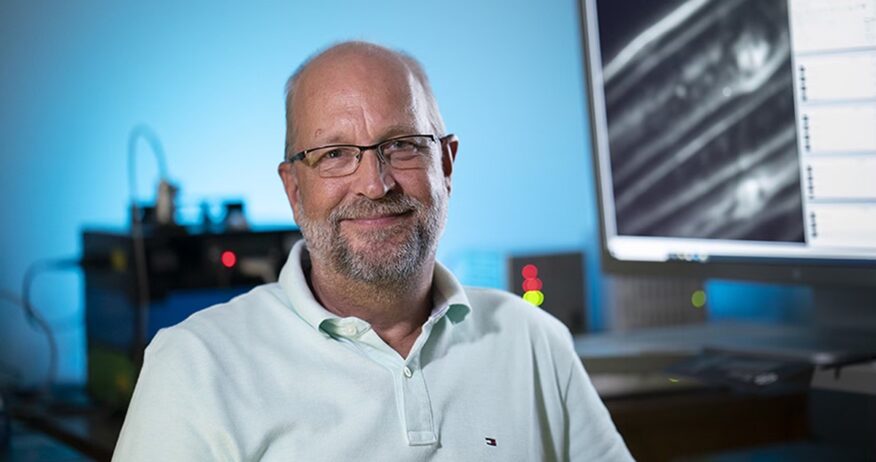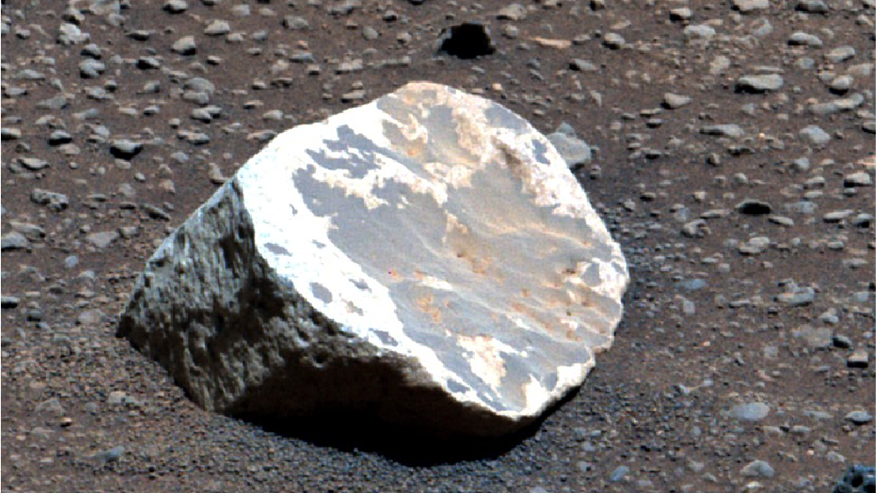Lasers, landscape and lost magnetic fields
Some of the newest and most exciting discoveries from Mars will be brought to you by the letter L

Roger Wiens, a planetary scientist and Mars rover expert at Purdue University with a topographical model of Mars and a photo of Curiosity. (Purdue University photo/John Underwood)
WEST LAFAYETTE, Ind. —
The first letter ever etched on the Martian surface is the letter L. Far from being an act of interplanetary graffiti, though, it’s there for scientific purposes. And it won’t be there forever – scientists plan to bring the marked rock home someday to be studied in a laboratory.
Roger Wiens, professor of earth, atmospheric, and planetary sciences in the College of Science at Purdue University and an expert in Mars robotics technology, led the team that built SuperCam, one of Mars rover Perseverance’s most innovative and effective tools. Recently, SuperCam used its laser to etch the first letter – L – on the Martian surface to learn more about Mars’ lost magnetic field.
“Humanity has only ever had one planetary magnetic field to study as recorded in rocks – Earth’s,” Wiens said. “Being able to study Mars – which we think once had an Earth-like magnetic field and lost it – will increase our knowledge by a whole new planet.”
Scientists on the Perseverance rover team are collecting rock samples – drill cores in cylindrical tubes – to be returned to Earth by the next mission. But to understand Mars’ magnetic field, they need to know how the sample was oriented when it was in the rock on Mars. The letter L is the easiest way – the way with the least number of strokes – to record how the rock was aligned on the planet. Scientists will compare the marking on the rock itself once it arrives on Earth with the marking as it was laid out in photos taken by the rover as it marked the rock. Comparing the rock sample’s alignment with Mars’ poles with qualities of the rock itself will give the researchers insight into the history of the planet’s magnetic field, which is currently very weak compared to Earth’s.
“We don’t yet fully understand our own magnetic field on Earth – how it formed and how it changes,” Wiens said. “Understanding Mars’ magnetic field might help us understand our own. A planet’s magnetic field protects it from cosmic radiation. Mars’ loss of its magnetic field contributed to the loss of its atmosphere and liquid surface water.”
About Purdue University
Purdue University is a top public research institution developing practical solutions to today’s toughest challenges. Ranked in each of the last four years as one of the 10 Most Innovative universities in the United States by U.S. News & World Report, Purdue delivers world-changing research and out-of-this-world discovery. Committed to hands-on and online, real-world learning, Purdue offers a transformative education to all. Committed to affordability and accessibility, Purdue has frozen tuition and most fees at 2012-13 levels, enabling more students than ever to graduate debt-free. See how Purdue never stops in the persistent pursuit of the next giant leap at https://stories.purdue.edu.
Media contact: Brittany Steff, bsteff@purdue.edu
Source: Roger Wiens, wiens@purdue.edu



